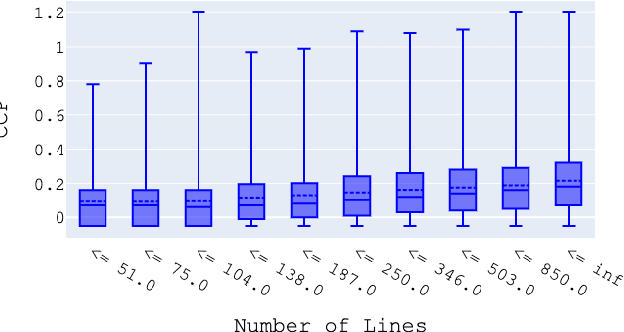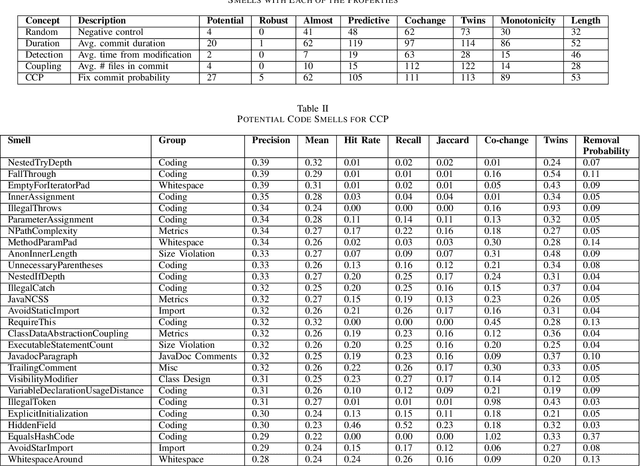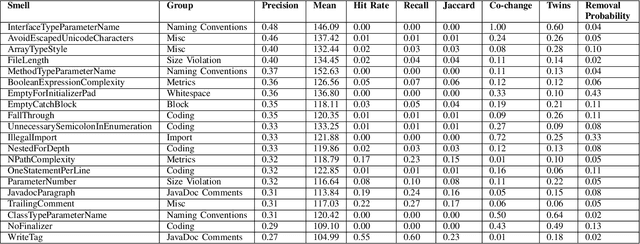Nili Ben Ezra
Follow Your Nose -- Which Code Smells are Worth Chasing?
Mar 02, 2021



Abstract:The common use case of code smells assumes causality: Identify a smell, remove it, and by doing so improve the code. We empirically investigate their fitness to this use. We present a list of properties that code smells should have if they indeed cause lower quality. We evaluated the smells in 31,687 Java files from 677 GitHub repositories, all the repositories with 200+ commits in 2019. We measured the influence of smells on four metrics for quality, productivity, and bug detection efficiency. Out of 151 code smells computed by the CheckStyle smell detector, less than 20% were found to be potentially causal, and only a handful are rather robust. The strongest smells deal with simplicity, defensive programming, and abstraction. Files without the potentially causal smells are 50% more likely to be of high quality. Unfortunately, most smells are not removed, and developers tend to remove the easy ones and not the effective ones.
 Add to Chrome
Add to Chrome Add to Firefox
Add to Firefox Add to Edge
Add to Edge